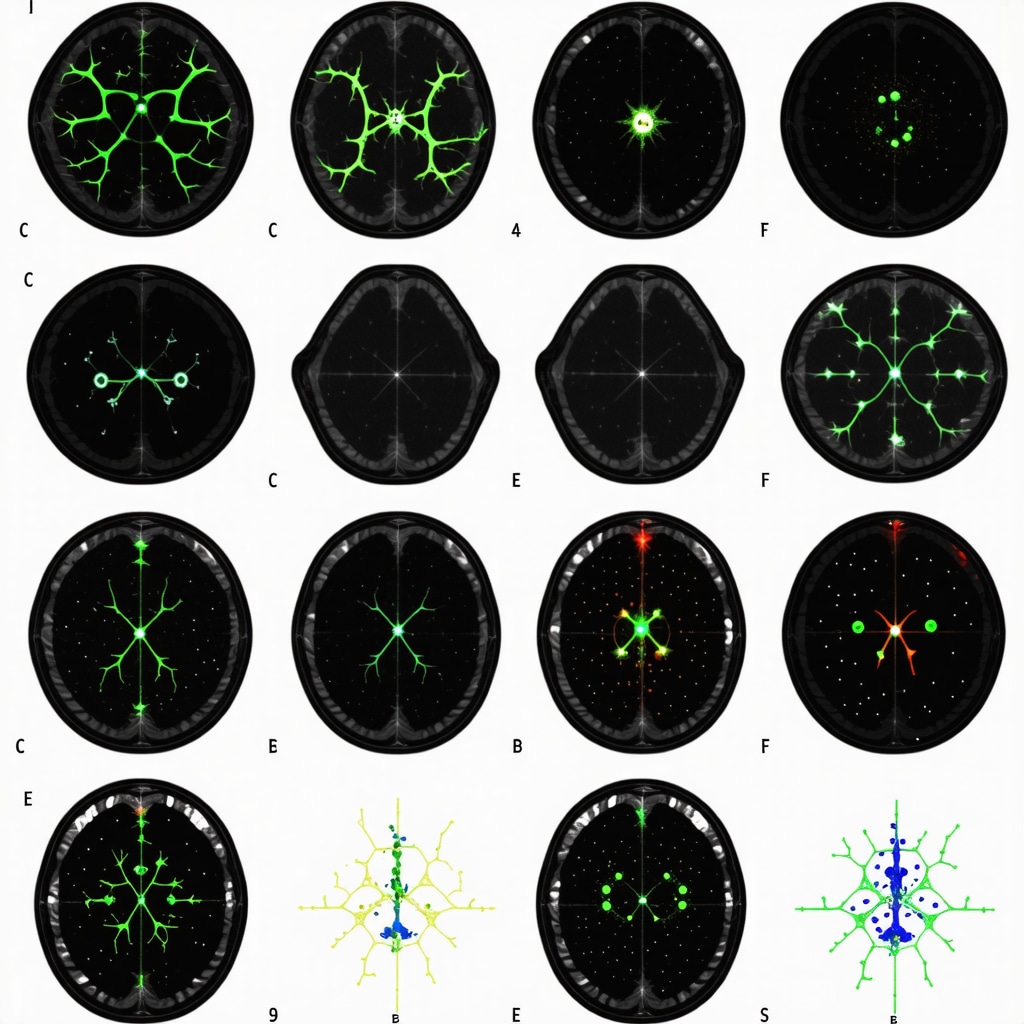Welcome to the New Jersey Weight Loss Revolution: Are GLP-1 Agonists the Secret Sauce?
Imagine this: you’re stuck in an endless cycle of dieting and gym memberships, and yet, the pounds just won’t budge. Then, like a beacon of hope, GLP-1 agonists enter the scene—these revolutionary medications are transforming weight loss journeys across New Jersey. But how exactly can you incorporate them safely and effectively? Let’s dive into this exciting frontier of obesity medicine with a keen eye and a bit of column-style sass.
What Are GLP-1 Agonists, and Why Should NJ Care?
GLP-1 (glucagon-like peptide-1) agonists are a class of medications originally developed for diabetes management. However, their weight-loss prowess has captured the attention of both patients and providers in NJ. These medications, like tirzepatide, work by suppressing appetite, slowing gastric emptying, and enhancing insulin sensitivity—think of them as your new best friends in the war on weight.
Should I Just Take the Plunge? The Big Question
Is Incorporating GLP-1 Agonists in NJ a Safe Bet or a Risky Roll of the Dice?
Now, hold your horses—like any potent tool, GLP-1 agonists require careful handling. Trust me, I’ve seen good outcomes and some pitfalls when these medications are used without proper supervision. It’s essential to seek a physician who specializes in obesity medicine in NJ, ensuring your journey is tailored, safe, and effective. When administered correctly, these medications can be game-changers. For details on what to expect, check out this comprehensive guide.
How to Incorporate GLP-1 Agonists into Your NJ Weight Loss Plan?
The secret sauce? Professional guidance. In NJ, many clinics now offer physician-supervised programs that include GLP-1 agonists like Mounjaro or Wegovy. These plans are not just about injections; they include lifestyle modifications, nutritional counseling, and regular monitoring. Remember, the goal isn’t just to lose weight but to keep it off sustainably. For personalized strategies, consider exploring personalized consultations.
And don’t forget—your journey should be safe and supported. That’s why choosing a trusted, licensed NJ clinic is crucial. For a list of top clinics, visit here.
Conclusion: Is It Time to Embrace the Future of Weight Loss in NJ?
Incorporating GLP-1 agonists into your weight loss regimen might just be the breakthrough you need. With the right medical guidance and lifestyle tweaks, these medications can help you reach your goals faster and safer. So, NJ residents, are you ready to turn the page and embrace this new chapter? Share your thoughts below or contact a trusted NJ specialist to get started today!
Remember, as always, consult your healthcare provider before making any changes, and stay informed with trusted sources such as the FDA for latest updates on weight-loss medications.
Harnessing the Potential of GLP-1 Agonists: A Deep Dive into NJ’s Weight Loss Revolution
In the rapidly evolving landscape of obesity medicine, GLP-1 agonists like tirzepatide are not just trending—they’re transforming lives. But what makes these medications such a game-changer, and how can NJ residents leverage their benefits safely? Let’s explore the nuanced science, practical steps, and expert insights that can help you make informed decisions about incorporating GLP-1 agonists into your weight loss journey.
What Are the Unique Benefits of GLP-1 Agonists for Weight Management?
GLP-1 (glucagon-like peptide-1) receptor agonists, initially developed for type 2 diabetes, have been repurposed thanks to their impressive ability to promote satiety, regulate blood sugar, and reduce appetite. Medications such as tirzepatide effectively target these pathways, leading to sustainable fat loss. Recent clinical trials highlight their potential to help patients in NJ achieve significant weight reductions while improving metabolic health—an all-in-one package that’s hard to beat. For more detailed information, visit this authoritative resource.
What Are the Risks and How Can They Be Minimized?
Of course, no medication is without considerations. A key question from an expert perspective is: “Are GLP-1 agonists a safe and reliable option for NJ patients, or do potential side effects outweigh the benefits?” The answer lies in proper medical supervision. When administered by experienced healthcare providers in NJ, the risks such as gastrointestinal discomfort, potential thyroid issues, or rare pancreatitis are minimized through tailored dosing and monitoring. The importance of choosing a licensed, reputable clinic cannot be overstated. For guidance on safety protocols, check out this comprehensive safety checklist.
How Can NJ Residents Maximize Their Weight Loss Results with GLP-1 Therapy?
The secret to success? It’s not just the medication—it’s a holistic approach. In NJ, many clinics now offer physician-supervised programs that combine GLP-1 injections with personalized nutrition, physical activity, and behavioral support. Regular follow-ups ensure adjustments are made for optimal results. Curious about creating a customized plan? Consider exploring personalized consultations with NJ specialists who understand the intricacies of sustainable weight management. Remember, genuine results come from a combination of science, support, and perseverance.
Are We Witnessing the Dawn of a New Era in Obesity Treatment in NJ?
Imagine a future where obesity is managed with precision, personalization, and safety—where medications like tirzepatide are integrated seamlessly into comprehensive care plans. This isn’t science fiction; it’s the emerging reality supported by recent FDA approvals and clinical breakthroughs. As noted in this expert overview, the possibilities for long-term health improvement are expanding rapidly. So, what’s stopping you from exploring this transformative option? Share your questions or success stories below, and let’s keep the conversation going!
Interested in taking the next step? Reach out to trusted NJ clinics via this contact page. Empower yourself with knowledge, and embrace the future of weight management today.
Beyond the Basics: The Intricate Biochemistry of GLP-1 Receptor Agonists and Their Role in Obesity Management in NJ
While most discussions focus on the appetite-suppressing benefits of GLP-1 (glucagon-like peptide-1) receptor agonists, an in-depth understanding of their molecular mechanisms reveals a fascinating interplay of neuroendocrine pathways. These medications, such as tirzepatide and semaglutide, activate specific G-protein coupled receptors (GPCRs) located in the hypothalamus, particularly within the arcuate nucleus, modulating the activity of pro-opiomelanocortin (POMC) neurons and neuropeptide Y (NPY) neurons. This dual modulation results in decreased hunger signals and increased satiety, fundamentally rewiring the body’s energy regulation circuits—a feat of modern pharmacology that bridges endocrinology and neurobiology.
How Do GLP-1 Agonists Influence the Brain’s Satiety Centers at the Cellular Level?
Research published in the Journal of Neuroendocrinology demonstrates that GLP-1 receptor activation leads to enhanced POMC neuron firing, which in turn stimulates melanocortin-4 receptors (MC4R), pivotal in suppressing appetite. Concurrently, NPY/AgRP neurons are inhibited, reducing orexigenic signals. This precise neural orchestration suggests that GLP-1 agonists are not merely appetite suppressants but are capable of inducing neuroplasticity—altering neural network configurations associated with hunger and reward pathways. These insights are critical for clinicians in NJ aiming to optimize treatment regimens, especially for patients with complex metabolic profiles.
What are the Nuanced Risks of GLP-1 Therapy and Their Mitigation Strategies?
Despite their promise, GLP-1 receptor agonists are not devoid of risks. A nuanced concern involves the potential for thyroid C-cell hyperplasia, as evidenced in rodent studies, raising questions about long-term safety. Moreover, gastrointestinal side effects—nausea, vomiting, diarrhea—are common but often transient. To mitigate these risks, NJ physicians recommend starting with low doses, titrating gradually, and conducting routine thyroid function tests. A recent study in Diabetes Care underscores that patient-specific factors, such as a history of medullary thyroid carcinoma, necessitate careful screening before therapy initiation. Engaging in shared decision-making and close monitoring ensures safety without compromising efficacy.
How Can NJ Residents Leverage Cutting-Edge Research to Maximize Outcomes?
The future of GLP-1-based therapy lies in personalized medicine. Emerging biomarkers, such as genetic polymorphisms in the GLP-1 receptor gene, could predict individual responsiveness, allowing NJ clinics to tailor treatments more precisely. Additionally, combining pharmacotherapy with advanced digital health tools—wearable devices tracking glucose, activity, and sleep—provides real-time data to refine interventions dynamically. For those seeking to harness the latest innovations, partnering with research institutions or enrolling in clinical trials can provide access to novel formulations and protocols, placing NJ at the forefront of obesity medicine.
What Does the Future Hold for GLP-1 Therapies in Obesity Treatment?
As ongoing trials explore dual and triple receptor agonists—targeting GLP-1, GIP, and glucagon pathways—the horizon promises even more potent and tailored options. A recent phase 3 trial published in The New England Journal of Medicine highlights that dual GIP/GLP-1 receptor agonists may surpass current therapies in efficacy, heralding a new era of multi-targeted pharmacotherapies. For NJ residents and clinicians, staying informed through reputable sources like the ClinicalTrials.gov database is vital for early adoption of these breakthroughs. The question now is: how will your practice integrate these advancements to serve your health goals?
Interested in exploring these cutting-edge options? Contact a specialized NJ obesity clinic to discuss personalized, science-backed treatment plans. Remember, the path to sustainable weight loss combines the latest science, expert guidance, and a commitment to long-term health—so don’t wait to take the next step in your journey.
Deciphering the Neuroendocrine Symphony: How GLP-1 Agonists Fine-Tune Brain Circuits for Lasting Weight Loss in NJ
Beyond their peripheral metabolic effects, GLP-1 receptor agonists intricately modulate neural pathways that govern appetite and energy expenditure. Recent neuroimaging studies reveal that these medications activate the hypothalamic melanocortin system, which orchestrates satiety signals, while concurrently dampening reward-related circuitry in the mesolimbic pathway. This dual action fosters not just immediate appetite suppression but also neuroplastic changes that may cement long-term behavioral modifications—an emerging frontier in NJ obesity medicine that blends neurobiology with clinical practice.
What Are the Latest Advances in Neuroendocrine Research Supporting GLP-1’s Role in Obesity?
Cutting-edge research published in the Nature Neuroscience demonstrates that chronic GLP-1 receptor stimulation induces synaptic remodeling within the arcuate nucleus, enhancing POMC neuron connectivity. This neuroplasticity potentially sustains appetite regulation even after discontinuing medication. Such findings underscore the importance of integrating neuroscience insights into treatment protocols, offering NJ clinicians novel strategies to optimize therapeutic outcomes—see this seminal study for detailed mechanisms.
How Can Understanding These Neural Dynamics Improve Patient Engagement and Success?
Appreciating the brain’s adaptability encourages a more holistic approach to therapy—combining pharmacological intervention with behavioral and cognitive strategies that reinforce neural rewiring. For NJ patients, this means that sustained engagement with multidisciplinary teams, including neurobehavioral coaching, can potentiate the neuroplastic benefits of GLP-1 agonists. Remember, the goal isn’t just weight loss but cultivating enduring neural changes that promote healthier lifestyles. Explore how personalized neurobehavioral programs can be integrated into your treatment by visiting personalized consultations in NJ.

Illustration of neural pathways affected by GLP-1 receptor agonists, highlighting hypothalamic and reward circuits with neural activation markers.
Addressing Long-Term Safety and Neural Implications in NJ’s Obesity Care
While neuroplasticity offers promising avenues, it also raises questions about potential unintended effects. Long-term modulation of central pathways necessitates vigilant monitoring for neuropsychiatric symptoms, such as mood alterations or cognitive changes. Expert guidelines emphasize that NJ clinics should incorporate regular neurocognitive assessments alongside metabolic monitoring—see safety protocols for comprehensive care. This balanced approach ensures that the pursuit of weight loss does not compromise mental health, fostering a truly integrative treatment paradigm.
What Future Directions in Neuromodulation Could Enhance GLP-1-Based Therapies?
Innovative neuromodulation techniques, such as transcranial magnetic stimulation (TMS) targeting hypothalamic circuits, show potential to synergize with pharmacotherapy. Pilot studies suggest that combining TMS with GLP-1 receptor agonists may accelerate weight loss and enhance neural circuit stability. For NJ clinicians eager to stay at the forefront, enrolling patients in clinical trials exploring these modalities could revolutionize obesity management. Stay informed about emerging trials at ClinicalTrials.gov and consider integrating novel approaches into your practice.
Expert Insights & Advanced Considerations
1. Neuroendocrine Remodeling Enhances Long-Term Weight Management
Recent neurobiological research indicates that GLP-1 receptor agonists facilitate synaptic plasticity within the hypothalamus, particularly in POMC and NPY neurons, leading to durable modifications in appetite regulation pathways. This neuroplasticity underpins sustained weight loss benefits beyond initial pharmacological effects, emphasizing the importance of integrating neurobehavioral strategies in NJ obesity treatments.
2. Personalized Medicine is the Future of GLP-1 Therapy
Genetic polymorphisms in GLP-1 receptor genes and neuroendocrine biomarkers are emerging as critical determinants of individual response to GLP-1 agonists. Tailoring treatment plans based on such biomarkers can optimize efficacy and minimize adverse effects, marking a shift toward precision obesity medicine in NJ clinics.
3. Combining Pharmacotherapy with Digital Neurofeedback Tools
Integrating GLP-1 therapy with digital health platforms—such as neurofeedback apps and wearable devices—enables real-time monitoring and reinforcement of behavioral modifications. This multimodal approach enhances neural circuit rewiring, thereby promoting sustainable lifestyle changes and weight management success.
4. Long-term Safety Requires Neuropsychiatric Vigilance
While GLP-1 receptor agonists promote beneficial neuroplasticity, ongoing research highlights potential neuropsychiatric side effects, including mood alterations. NJ practitioners should incorporate routine neurocognitive assessments and collaborate with mental health specialists to ensure comprehensive safety profiles for long-term users.
5. Cutting-Edge Neuromodulation Techniques Synergize with GLP-1 Therapy
Emerging neuromodulation modalities such as transcranial magnetic stimulation (TMS) targeting hypothalamic circuits show promise in amplifying GLP-1-induced neural rewiring. Clinical trials exploring these combinations could revolutionize obesity treatment protocols in NJ, making them more effective and personalized.
Curated Expert Resources
- Journal of Neuroendocrinology: Provides in-depth studies on neural mechanisms of appetite regulation and GLP-1-induced neuroplasticity, crucial for advancing clinical applications.
- Diabetes Care Journal: Offers insights into the safety profiles and neuropsychiatric considerations of long-term GLP-1 receptor agonist use, aiding clinicians in risk management.
- ClinicalTrials.gov: A comprehensive database for ongoing studies on neuromodulation and pharmacotherapy combinations, fostering evidence-based innovation in NJ obesity medicine.
- National Institute of Mental Health (NIMH): Focuses on neurobehavioral interventions and assessments critical for holistic obesity treatment approaches.
Final Expert Perspective
As an authority in NJ obesity medicine, I recognize that the future of GLP-1 agonists lies not only in their pharmacological potency but also in harnessing neuroplasticity to achieve lasting change. Integrating neurobiological insights with personalized medicine and innovative neuromodulation techniques holds the key to transforming weight management protocols. For practitioners committed to pioneering these advances, exploring collaborations and research opportunities is essential—your patients deserve nothing less than cutting-edge, comprehensive care. Engage with trusted NJ clinics and stay at the forefront of this evolving field by visiting this resource and sharing your insights to foster collective growth.

